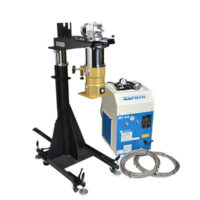Demanding bolometer specifications are not a problem for us. We produce ultra low noise and cost-effective bolometers across a wide spectral range. Our bolometer systems each offer advantages to best meet your spectral band, frequency response, noise, budget, and cryogenic or cryogen-free cooling requirements. We have decades of experience customizing configurations to meet your specific application requirements including longer hold times, increased work height, dual detectors, filter positions, coupling options, and more.
Bolometer Systems Table
| Bolometers | Spectral Response (µm) | Operating Temp (K) | Electrical Sensitivity (S[V/W] | Noise Equivalent Power [W/Hz(1/2)] | Noise Vn[nV/Hz(1/2)] | Frequency Response (Optimum Chopping Frequency) | Liquid Cryogen Cooling | Cryogen-free Cooling |
|---|---|---|---|---|---|---|---|---|
| General Purpose 4.2 K Bolometer System | 15 – 2000 | operation to 4.2 | ~ 2.4 X 105 | ~ 2.5 X 10-13 | ≤ 80 at 80Hz | < 500 Hz | ||
| Hi Res 4.2K Bolometer System | 15 – 500 | operation to 4.2 | ~ 6.1 X 105 | ~ 6.5 X 10-14 | ≤ 40 at 80Hz | < 200 Hz | ||
| Standard 1.6 K Bolometer System | 15 – 2000 | 1.6 | ~ 7.5 X 105 | ~ 4.6 X 10-14 | ≤ 40 at 80Hz | > 1 KHz | ||
| Far-IR 1.6 K Bolometer System | 300 – 5000 | 1.6 | ~ 1.0 X 107 | ~ 3.6 X 10-15 | ≤ 50 at 80Hz | < 300 Hz | ||
InSb Hot e-Bolometer | 0.3mm – 5mm | 4.2 | > 4.0 X 103 | < 8 x 10-13 | < 4.0 at 200Hz | < 600 kHz |
Cryogenic Bolometers
Cryogen-free Bolometers
What is a bolometer?
Bolometers are detectors used to measure incident IR radiation. They are very sensitive to thermal radiation and are predominantly used in the IR spectrum between 10 to 5000µm (30THz to 60GHz). The detector element is an extremely sensitive thermistor that is cooled to LHe temperatures to decrease the thermal background. Any thermal radiation that impinges upon the detector will cause a temperature change. This will cause a change in resistance which is amplified and measured as a voltage difference.
Because bolometers measure a change in temperature, the incident radiation must be modulated. This allows the bolometer to excite and relax, thus a measurement of the change in resistance is made that corresponds to the energy of the incident radiation. The speed at which the bolometer reacts to this temperature change is dependent upon several factors that can be altered, if desired, at the time the system is ordered.
Cooled using liquid cryogens or cryo-free mechanical refrigeration.
Bolometers are cooled to cryogenic temperatures using pour-filled liquid cryogen dewars or cryogen-free mechanical refrigeration. Liquid cryogen coolers are compact with no moving parts, easy to use, have a lower initial cost, and recommended for simple, reliable operation. Refrigerated systems are larger, more complex, and have a higher initial cost but eliminate the expense of refilling cryogens. Cryo-free cooling is recommended for cost-effective, continuous unattended cold operation:


